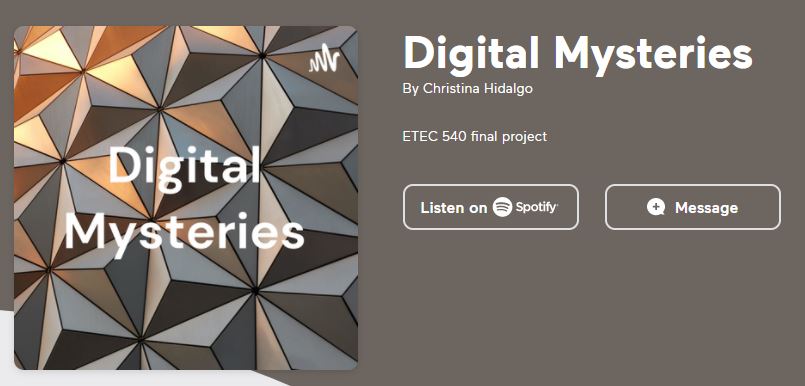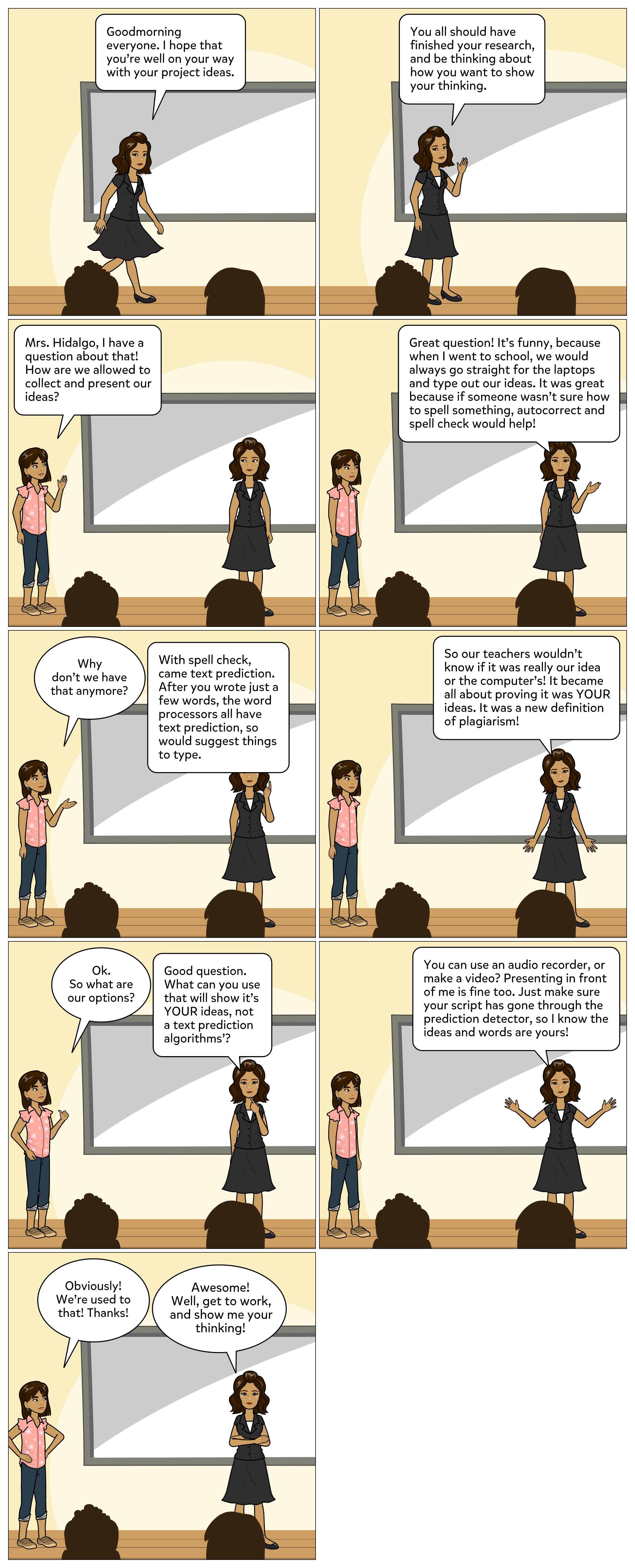Final Assignment
Find the first episode of Digital Mysteries podcast: Predictive Text – Friend or Foe?
References:
Darragh, J. J., Witten, I. H., & James, M. L. (1990). The reactive keyboard: A predictive typing aid. Computer (Long Beach, Calif.), 23(11), 41-49. https://doi.org/10.1109/2.60879
Dunn, J., & Sweeney, T. (2018). Writing and iPads in the early years: Perspectives from within the classroom. British Journal of Educational Technology, 49(5), 859-869. https://doi.org/10.1111/bjet.12621
Gibler, C. D. (1981). linguistic and human performance considerations in the design of an anticipatory communication aid
Hale, T. (2017). From the clay tablet to predictive text: How tech shapes literature. FT.Com, Retrieved from https://www.proquest.com/trade-journals/clay-tablet-predictive-text-how-tech-shapes/docview/1977717203/se-2?accountid=14656
J. J. Darragh, I. H. Witten and M. L. James, “The Reactive Keyboard: a predictive typing aid,” in Computer, vol. 23, no. 11, pp. 41-49, Nov. 1990, doi: 10.1109/2.60879.
Lewis-Kraus, Gideon. “The Fascinating…Frustrating…Fascinating History of Autocorrect.” Wired|Gadget Lab, July 22, 2014. http:/ / www.wired.com/ 2014/ 07/ history-of-autocorrect/.
Li, X. (2017). Divination engines: A media history of text prediction
MacArthur, C. A. (1999). Word prediction for students with severe spelling problems. Learning Disability Quarterly, 22(3), 158-172. https://doi.org/10.2307/1511283
Mullaney, T. S. (2012). The Moveable Typewriter: How Chinese Typists Developed Predictive Text during the Height of Maoism. Technology and Culture, 53(4), 777–814. http://www.jstor.org/stable/41682742
Raynal M., Martin B. (2020) SlideKey: Impact of In-depth Previews for a Predictive Text Entry Method. In: Miesenberger K., Manduchi R., Covarrubias Rodriguez M., Peňáz P. (eds) Computers Helping People with Special Needs. ICCHP 2020. Lecture Notes in Computer Science, vol 12377. Springer, Cham. https://doi.org/10.1007/978-3-030-58805-2_43
Santa Clara University. (2018). Lessons from the AI Mirror Shannon Vallor. Retrieved from: https://www.youtube.com/watch?time_continue=8&v=40UbpSoYN4k&feature=emb_logo
Smith, Sidney L.; Goodwin, Nancy C. (1971). “Alphabetic Data Entry Via the Touch-Tone Pad: A Comment”. Human Factors. 13 (2): 189–190. doi:10.1177/001872087101300212
Waldron, S., Wood, C., & Kemp, N. (2017). Use of predictive text in text messaging over the course of a year and its relationship with spelling, orthographic processing and grammar. Journal of Research in Reading, 40, 384-402.
You’ve got Enron Mail. (Nov 2020). In 99 Percent Invisible. Retrieved from: https://99percentinvisible.org/episode/youve-got-enron-mail/transcript/







